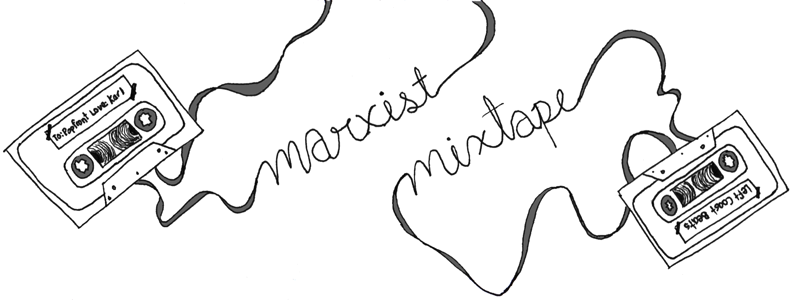Featuring Paul McCartney, Lenny Kaye and Philip Glass
Mercury Records
Music video directed by Gus Van Sant
In 1995, two years prior to his death, poet Allen Ginsberg published “Ballad of the Skeletons” in The Nation magazine. The poem, a scathing condemnation of Newt Gingrich’s America, received attention from other aging artists, including Philip Glass, Paul McCartney, Lenny Kaye and the considerably younger filmmaker Gus Van Sant. With rallying, Ginsberg was able to convince the four of them to work on producing a song and eventually even a music video to accompany.
In general, the nineties were not a good time for political music. Punk’s heyday had come and gone, and the third- and fourth-generation punk scene was considerably less barbed than its explicitly anarchist and anti-racist predecessors. Meanwhile, grunge, along with cynical cultural critics like Beavis and Butthead, epitomized the apathy and ennui of Generation X, enervated in the fight against the neoliberal politics of the Clinton administration. Then there were the boy bands: synthetic, producer-assembled troupes backed by industry cash, who reflected the consolidation of corporate power in the American culture machine.
These conditions, along with the video’s avant-garde tinge, make the song’s 1996 rotation on MTV truly unusual. The corporate-industrial music complex was reputedly miffed by the network’s decision to put it in heavy rotation; unlike most of the corporate cash-infused artists of the mid-nineties, “Ballad of the Skeletons” had no bottom line to feed; it was pure poetry, and perhaps the last of its kind. In some Western countries, including Australia, the song ended 1996 as one of the most requested.
The music video is delightful not only for its authenticity and star-power collaboration, but for the grandfatherly antics of old man Ginsberg, who twitches and stutters in an Uncle Sam top hat while images of war flicker in the background. The defining image at the 2:30 mark, of Ginsberg sermonizing with Gingrich and Clinton in the background, cements the song’s politics as radical rather than just liberal. Recall that at the time the song was released—a month before the 1996 presidential election—Clinton’s reputation, in liberal circles, was still sacrosanct.
In the video’s final seconds, Ginsberg holds up a pen to the camera and gently waves it. He would die only six months later. This final gesture, his attestation to the power of poetry to affect, inspire and radicalize, could be his visual epitaph.
